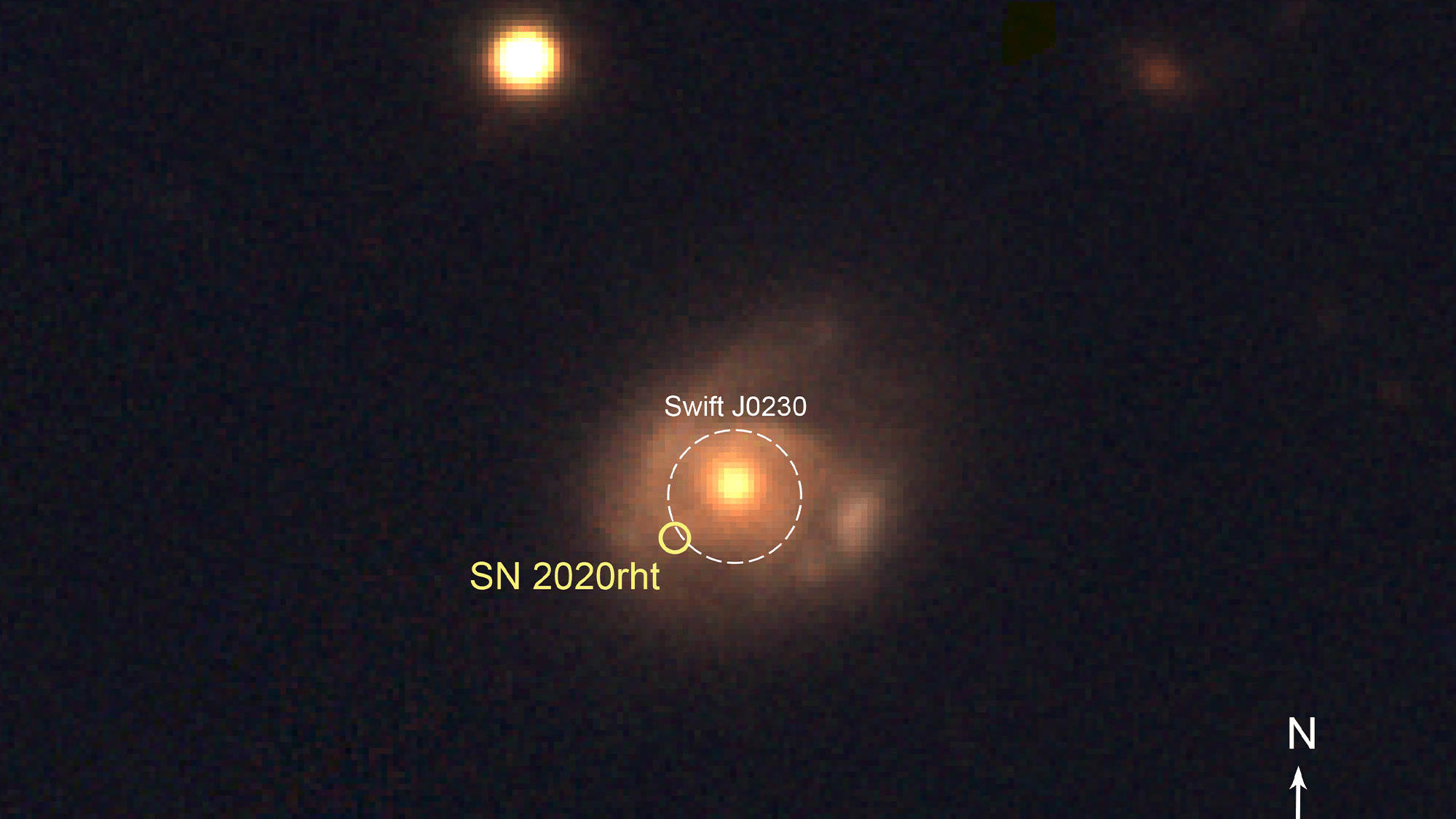

Just in time for spooky season, astronomers have detected a dark and hungry space monster. The newly spotted black hole named Swift J0230 is gradually eating huge chunks of a star that is very much like our own sun. Every time this star passes close to Swift J0230, it loses the equivalent mass of three Earths. The findings are described in a study published September 7 in the journal Nature Astronomy.
[Related: Astronomers used dead stars to detect a new form of ripple in space-time.]
A bright X-ray flash that seemed to come from the center of a nearby galaxy called 2MASX J02301709+2836050 first alerted a team of astronomers from the University of Leicester. This galaxy is about 500 million light-years away from the Milky Way and the black hole Swift J0230 was officially spotted via a new tool developed by the scientists at NASA’s Neil Gehrels Swift Observatory.
The team scheduled more observations of this black hole and found that instead of decaying away as they expected, it would shine brightly for 7 to 10 days before abruptly switching off and repeating this process about every 25 days.
“Given that we found Swift J0230 within a few months of enabling our new transient-hunting tool, we expect that there are a lot more objects like this out there, waiting to be uncovered,” study co-author and University of Leicester astrophysicist Kim Page said in a statement.
According to the team, similar behavior has been observed in quasi-periodic eruptions and periodic nuclear transients. This is where a star has its material ripped away by a black hole as it is orbiting close by. However, black holes can differ in how often they erupt and whether the eruption is predominantly in X-rays or optical light. The regularity of Swift J0230’s emissions fell somewhere between these two types of outbursts, suggesting that it could form the ‘missing link’ between them.

“This is the first time we’ve seen a star like our sun being repeatedly shredded and consumed by a low mass black hole,” study co-author and University of Leicester astronomer Phil Evans said in a statement. “So-called ‘repeated, partial tidal disruption’ events are themselves quite a new discovery and seem to fall into two types: those that outburst every few hours, and those that outburst every year or so. This new system falls right into the gap between these, and when you run the numbers, you find the types of objects involved fall nicely into place too.”
For the study, the team used models proposed for these two classes of events as a guide. They concluded that Swift J0230’s outbursts represent that a sun-sized star is in an elliptical orbit around a low-mass black hole smack in the center of its galaxy. As this star’s orbit takes it closer to the intense gravitational pull of the black hole, the material equivalent to the mass of three Earths is sucked from the star’s atmosphere and heated up as it plummets into the black hole. The intense heat is about 3.6 million degrees Fahrenheit and releases the surge of X-rays that the Swift satellite first detected.
[Related: Black hole collisions could possibly send waves cresting through space-time.]
The team estimates that the black hole is about 10,000 to 100,000 times the mass of our sun—shockingly small for the supermassive black holes that are usually found at the center of galaxies. By comparison, the black hole at the center of our own galaxy is believed to be about 4 million solar masses, while most are in the region of 100 million solar masses.
This is the first discovery for the new transient detector on the Swift satellite, which was developed by the University of Leicester team and running on their computers.
“This type of object was essentially undetectable until we built this new facility, and soon after it found this completely new, never-before-seen event. Swift is nearly 20 years old and it’s suddenly finding brand new events that we never knew existed,” said Evans. “I think it shows that every single time you find a new way of looking at space, you learn something new and find there’s something out there you didn’t know about before.”
The team was supported by the UK Space Agency and the UK Science and technology Facilities Council (STFC).
